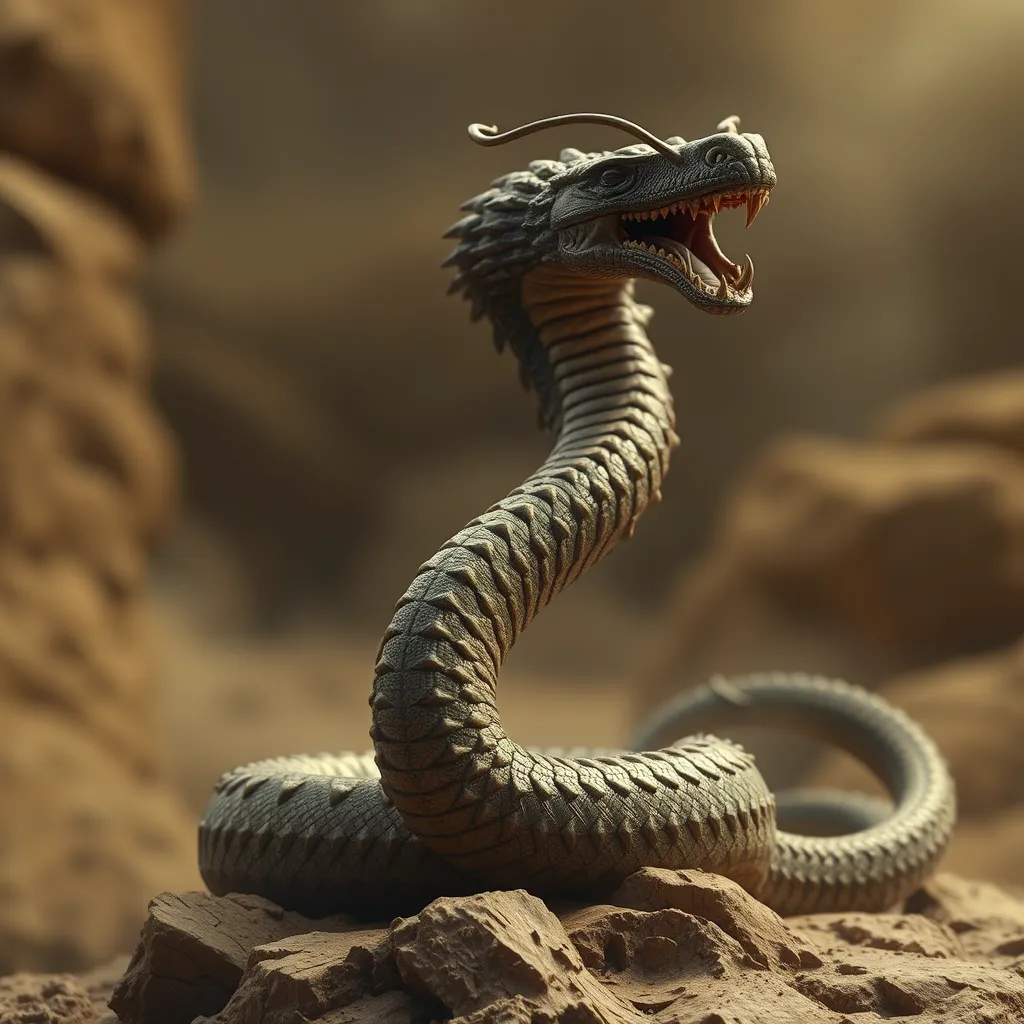The Red Demon of Mount Ooe: Exploring the Legends of the Oni
I. Introduction
Mount Ooe, a significant landmark in Japan, is steeped in folklore and mystery. Its towering presence has given rise to numerous legends, particularly that of the infamous Red Demon, an Oni that has captured the imaginations of many. The term ‘Oni’ refers to a kind of supernatural creature in Japanese mythology, often depicted as demonic beings with a fearsome appearance, embodying both malice and mischief.
This article aims to delve into the rich tapestry of legends surrounding the Red Demon of Mount Ooe, examining its historical context, cultural significance, and the enduring themes that resonate through its narrative.
II. The Historical Context of Oni in Japanese Culture
The origins of Oni in ancient Japanese beliefs can be traced back to early spiritual and animistic traditions. Initially, Oni were viewed as spirits that could be both benevolent and malevolent. Over time, they evolved into the monstrous figures we recognize today, often associated with evil and chaos.
The evolution of the Oni mythos has been influenced by various factors:
- Folklore and Oral Traditions: Stories of Oni were passed down through generations, often changing in tone and detail.
- Artistic Representations: Oni have been depicted in Japanese art, from ancient scrolls to modern prints, showcasing their fearsome attributes.
- Literature: Classic literature, such as “The Tale of the Heike,” features Oni, embedding them deeper into the cultural consciousness.
The symbolism of Oni is complex, representing more than just evil. In Japanese art and literature, Oni often embody fears, societal issues, and moral lessons, serving as cautionary figures to guide behavior and ethics.
III. The Legend of the Red Demon of Mount Ooe
The Red Demon, known as “Akuma” in local lore, is characterized by its striking appearance: bright red skin, sharp horns, and fearsome claws. It is often depicted as a towering figure, embodying raw power and ferocity. The traits attributed to the Red Demon include:
- Strength: The Red Demon possesses immense physical power, capable of causing destruction.
- Intelligence: Unlike many brutish depictions of Oni, the Red Demon is often portrayed as cunning.
- Supernatural Abilities: Capable of manipulating natural elements and instilling fear in the hearts of those who encounter it.
The rise of the Red Demon’s notoriety can be traced back to various local tales. One popular story recounts how the Red Demon terrorized local villagers, stealing crops and causing havoc. However, as the legend evolved, so too did the narrative surrounding the demon, presenting it as a misunderstood creature often provoked by human actions.
Key encounters with the Red Demon are woven into the fabric of local folklore, with villagers recounting tales of bravery and cunning in the face of its wrath. These stories often include themes of redemption, where humans and the Oni find common ground, illustrating the complexity of their relationship.
IV. The Geographic and Cultural Significance of Mount Ooe
Mount Ooe is located in the western part of Japan, known for its rugged terrain and stunning natural beauty. The mountain’s imposing peaks and deep forests create an atmosphere ripe for legends and supernatural occurrences.
Mount Ooe plays a vital role in local culture:
- Festivals: Annual festivals celebrate the Red Demon, drawing visitors who engage in traditional dances and rituals.
- Folklore Preservation: The mountain is a hub for storytelling, where tales of the Red Demon are shared and preserved.
- Cultural Identity: The legends associated with Mount Ooe contribute to the community’s sense of identity and heritage.
The connection between the landscape and the Oni legends is profound. The mountain’s features are often woven into the narratives, symbolizing the unpredictable nature of the Oni and the balance between humanity and the supernatural.
V. Thematic Analysis of the Red Demon Legend
The legend of the Red Demon offers a rich ground for thematic exploration:
- Fear and Moral Lessons: Stories of the Red Demon often reflect societal fears and the consequences of human actions.
- Duality: Oni are portrayed both as villains and protectors, challenging the simplistic good vs. evil dichotomy.
- Nature and the Supernatural: The interplay between the natural world and supernatural elements is central to the legend, emphasizing respect for nature.
VI. Modern Interpretations and Representations of Oni
In contemporary media, Oni continue to captivate audiences:
- Films: Oni appear in various Japanese horror films, often as symbols of fear and societal issues.
- Anime and Manga: The portrayal of Oni in anime often blends traditional elements with modern storytelling, making them relatable to younger audiences.
- Literature: Modern authors explore Oni in various contexts, expanding their characterizations beyond traditional boundaries.
The globalization of culture has also impacted the perception of Oni. While traditional beliefs persist, there is a growing fascination with these creatures outside of Japan, leading to a hybridization of Oni representations in popular culture.
VII. Local Practices and Rituals Related to the Red Demon
Local practices surrounding the Red Demon of Mount Ooe include:
- Festivals: Celebrations often feature parades and performances that honor the Red Demon, involving the community in the festivities.
- Traditional Rituals: Various rituals are performed to appease or ward off the Red Demon, such as offerings of food and prayers.
- Storytelling Traditions: Elders pass down tales of the Red Demon, ensuring that the legend remains alive in the community.
VIII. Conclusion
The Red Demon of Mount Ooe, along with the broader Oni mythos, highlights the intricate relationship between folklore, culture, and identity in Japan. These legends serve as cautionary tales, moral lessons, and sources of entertainment, reflecting the complexities of human nature and our interactions with the supernatural.
As we explore these legends, we are reminded of their enduring legacy in modern culture. We encourage readers to delve into local folklore, uncovering the rich narratives that shape our understanding of the world and ourselves.



